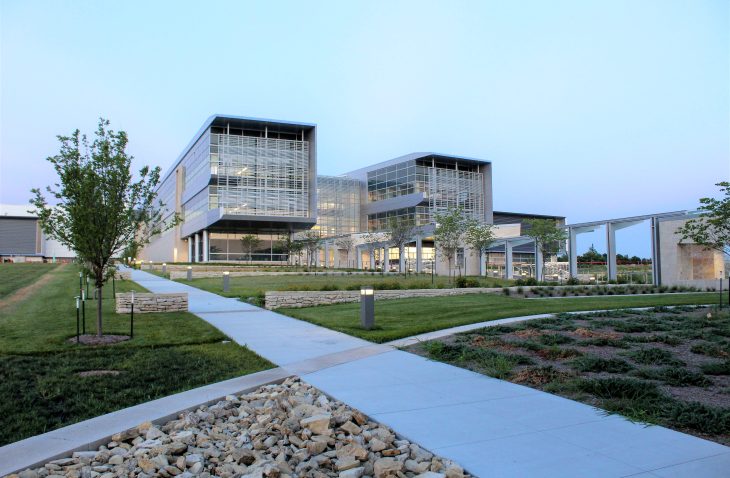National Bio and Agro-Defense Facility (NBAF)

The National Bio- and Agro-Defense Facility (NBAF) represents the pinnacle of research for protecting the United States’ food and animal agriculture supply. It is a facility under the joint direction of the U.S. Department of Homeland Security and the U.S. Department of Agriculture with a primary mission of studying foreign animal, emerging and zoonotic diseases that threaten U.S. animal agriculture and public health. NBAF provides critical capabilities for developing vaccines and other countermeasures and training veterinarians in preparedness and response to these diseases.
The facility is 574,000-sf and includes biosafety level (BSL) 2, 3, and 4 labs, as well as supporting spaces and a dedicated central utility plant. NBAF includes new and expanded research capabilities, specifically, large animal biosafety level 4 (ABSL-4) containment for the study of high-consequence diseases affecting large livestock.
NBAF’s design is efficient and secure. The structural system for the three-story building is a cast-in-place mild steel reinforced concrete flat plate system. With a flat slab soffit, the formwork to construct this system is simple. The uniform depth coordinates easily with other building systems. A full building-height Vierendeel truss system is used to allow the long cantilever at the west side of the office. Given NBAF’s location in the central Kansas plains, it is designed to withstand a Category EF5 tornado with top sustained wind speeds of 230 mph, as well as vehicular and debris impact. It is also designed for progressive collapse, allowing the building to stand if some of the structural members become compromised or destroyed.
It is designed around an atrium that connects the public elements of the program, offices and entry sequence. The containment program is wrapped around the atrium, creating a dense plan that shortens travel distances. The massing of large research programs is broken down in scale and nestled into the site’s rolling hills, resembling a collection of elements.
Visible sustainable strategies of water management (capture and reuse), green roofs, on-site renewable energy (photovoltaic panels) and automated building system controls (daylighting controls and occupancy sensors) further advance the progressive nature of the facility.
Read a related case study on security services IMEG provided for this project.







